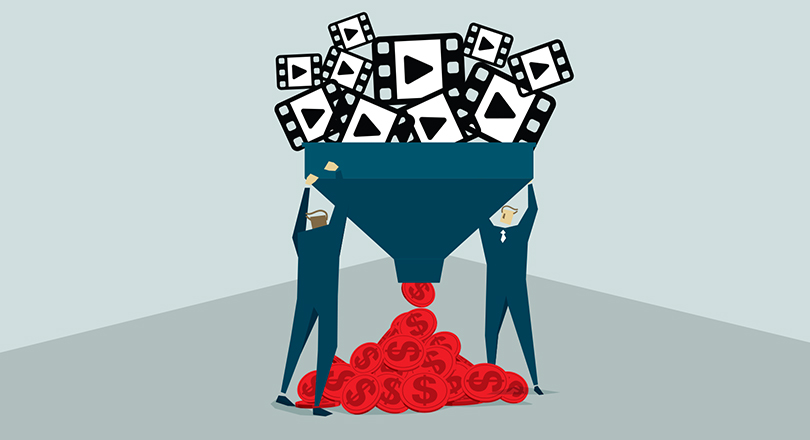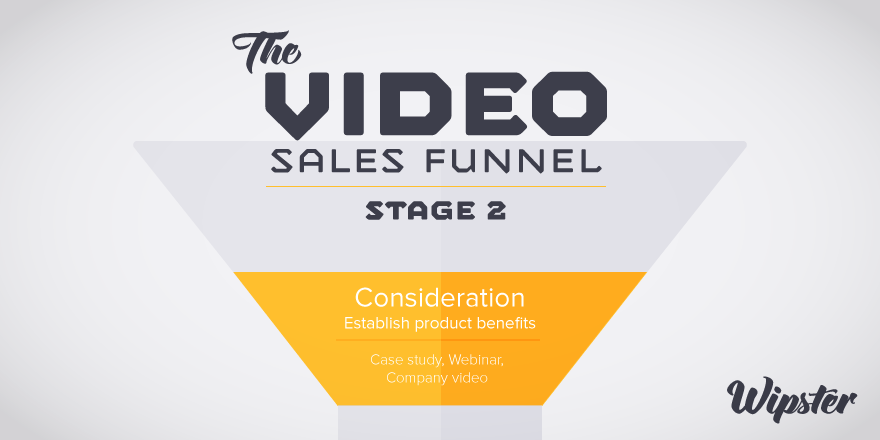Tips & Tricks - Get More out of Wipster
If you're a new user of Wipster or have just missed some of our recent updates, you might have missed some things:--Wipster's suite of integrations...

If you are reading this, you probably understand the importance of organizing KPIs up front, but may need to make a business case as to why your company needs to discuss this and why it matters.
My argument:
Having video without any benchmarks would be like trying to drive somewhere without having a clue how to get there. You may eventually get to your destination, however you're going to waste a bunch of time riding around aimlessly.
That said, before you can establish the KPIs for video content, you'll need to identify the end goal and discuss it with all relevant parties in your business. We're going to take a look at goals through the lens of a marketing funnel.

Let's start at the top of the funnel with awareness. In this case, your goals are likely around brand recognition and sentiment. At the awareness level, the amount you are spending is likely the highest as you are ultimately looking to influence new customers to buy or help spread the word on your brand.
Key metrics worth considering include total number of impressions, views, unique users, user engagement, follow through, demographics, and ad recall lift.
Total number of impressions, views, and unique users have mostly universal definition so let's define some of the others.
User engagement can cover the percent of a video that a viewer watched along with the number of likes, shares, and comments. The percentage of video viewers check out can also give you indications to the relevancy of the video and how engaged they are. The number of users who actually click the play button also provides strong indicators on the relevancy. If a majority also drop off at a certain point further into a video, a re-edit's necessary.
Follow through is going to depend on your video's Call to Action whether it's asking them to subscribe to your channel or click on a landing page link.
Demographics can cover a broad range of data, but provide insights on markets you possibly haven't thought of. For example targeting campaigns based on the engagement rates across specific devices or geographic regions.
Ad recall lift is the number of people likely to remember your ad after a few days collected through Facebook and YouTube's Brand Lift surveys.

At this point, your prospect wants to know more about you or the problem you solve.
Views and engagement rate are important here. If you are adding video or A/B testing on a product page, you will also want to look at the play rate as there may be opportunities to improve through minor tweaks like changing the preview thumbnail, placement of the video on a page, or the copy around it.
For videos added to a website, you can also compare the time spent on page, bounce rate, and conversions after adding or editing video. Once you have goals set up you in your analytic platform of choice, you'll be able to track user actions.
Whatever next move you are hoping for them to take will be the other KPIs you want to include.
Got an email signup options on your page and seeing low email clickthrough rates? They may be unengaged and underwhelmed if they're not opening the welcome emails or anything in a drip campaign.
Tracking sales you may also be looking at number of orders, average order size, total clicks, and follow through after viewing a video.

This is typically where the least amount of marketing spend occurs for video- that doesn't mean businesses aren't locking in KPIs for it. The lifetime value of great customers still matters.
Looking to educate current customers? You may want to have engagement rate, number of visitors, playrate, and number of repeat plays and watch time from individual users.
When building a community is key, review the number of comments, sentiment of comments, (positive or negative) and share total.
Once you establish goals for each video and visualize where in the marketing funnel customers will see your content, you can set specific KPIs and begin to collect data. Having quantitative data already collected for this year creates a much clearer and easier case for future marketing spend. A recent study by HubSpot found marketers tracking their ROI are 1.6 times more likely to earn a higher marketing budget.

If you're a new user of Wipster or have just missed some of our recent updates, you might have missed some things:--Wipster's suite of integrations...
We’re excited to announce a powerful new integration that brings Wipster’s intuitive video review tools directly into Final Cut Pro (FCP). Designed ...
1 min read